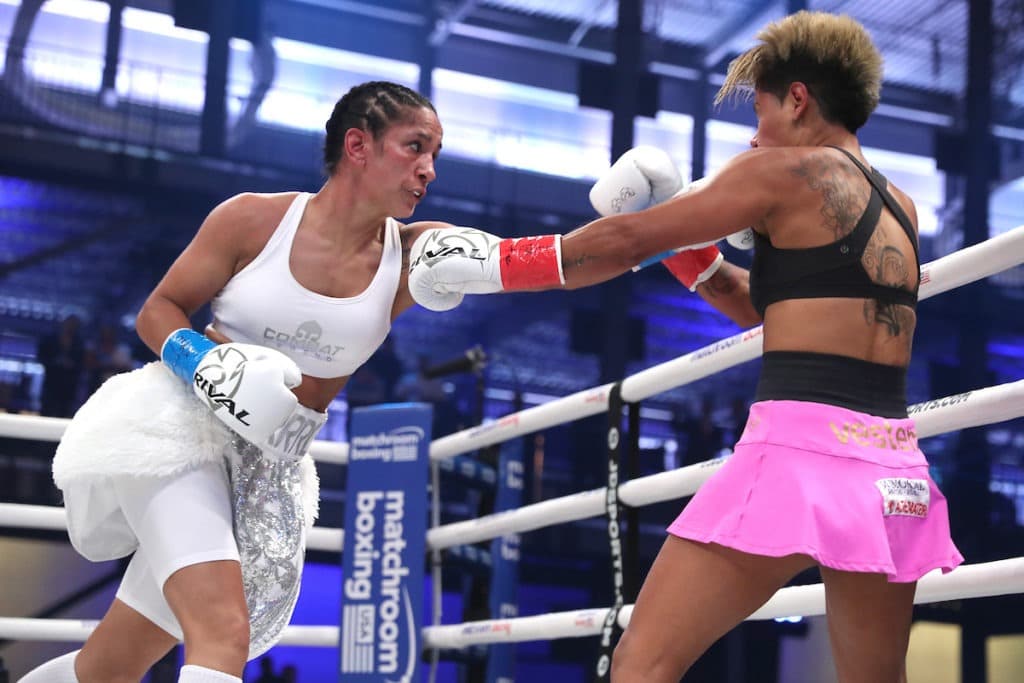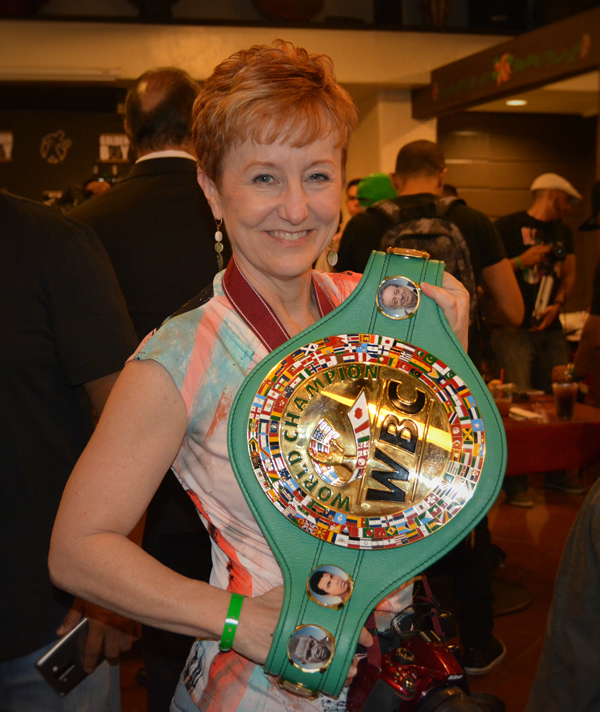Five hundred professional boxers have died from injuries since the Marquess of Queensberry Rules were introduced in 1884. One more joined the tragic list Thursday. Eighteen-year-old Mexican boxer Jeanette Zacarias Zapata died five days after suffering injuries in her bout with Marie-Pier Houle in Montreal on August 28.
It’s rare but not unheard of for women to suffer fatal injuries in combat sports. The first woman to die in a sanctioned boxing match was American Becky Zerlentes, a 35-year-old amateur boxer who died in 2005 after being injured in a Colorado State Golden Gloves tournament. Zerlentes also had a black belt in jujitsu.
If you want to argue against human beings engaging in combat sports overall out of principle, I’ll respect it if you mean no one of either gender should hit each other for our entertainment, whether in boxing OR any former of mixed martial arts, and any martial art where people take blows to the head. There’s consistency here.
But if you want to argue against women fighting three-minute rounds and women in combat sports in general, I’m not having it.
Give me three minutes, and I’ll make a case for women professional boxers fighting three-minute rounds, assuming you have average reading skills.
Matches at the Tokyo Olympic Games now have both the women AND the men fight three rounds of three minutes each. This was new. Women fought four two-minute rounds in 2012 and 2016. What happened in Tokyo? Nothing. That’s the point. The women are still fighting with headgear, but so were the men at the London 2012 Olympics. Perhaps we can take the next step at the Paris 2024 Games.
In mixed martial arts, both men and women fight five-minute rounds: three for non-title fights and five for championship fights. It’s not a coincidence there are more female stars in MMA than in boxing. One of boxing’s most accomplished champions, Claressa Shields, is pursuing MMA fights.
Risk vs. reward

The World Boxing Council (WBC) argues against three-minute rounds for women, 2. The numbers and opinions cited don’t seem to exist. If there’s a real concern, let’s fund some studies with transparency in mind.
Of course, there’s a concussion risk in boxing. Duh. It’s determined in large part by the dangerous effects of dehydration caused by weight cutting. The male human body is 60 percent water, women about 55 percent water. The brain is 73 percent water, and it sits within the skull protected by fluids that provide shock absorption and facilitates brain function.
It’s dangerous for boxers of ANY gender to deplete their body of fluids to make weight. Even with a day to rehydrate, the body doesn’t completely replace what’s been lost. If we were really serious about protecting boxers from concussions, we would go back to same-day weigh-ins and tighten up rehydration limits to just a few pounds.
It’s a misplaced sense of chivalry to “protect” women who choose to pursue combat sports from the worst effects boxing can dish out. Everyone who pursues boxing as a career goes in understanding all of the risks involved.
If you’re hellbent on doing something risky to earn a living, you should get paid commensurate with the risk. Women are denied equal pay when we deny them three-minute rounds.
Boxing fans love knockouts. The knockout ratio for women is far lower than for men, true. It’s usually blamed on their lower muscle mass overall when compared to men. Nope. Three-minute rounds are the main cause.
Knockout numbers don’t lie

Let’s go to the numbers. Cue boxing historian, CompuBox numbers guru, and self-proclaimed boxing nerd Lee Groves (follow him here on Twitter) to the rescue. He graciously dug into the records and pulled out this gem.
Groves compared the KO ratio for power punching Amanda Serrano and the heavyweight heavy hands of George Foreman. Serrano’s knockout percentage is just a shade under 70 percent. Foreman’s career knockout percentage is 84 percent. But if Foreman fought two-minute rounds his entire career, he would have 28 career knockout wins instead of 68. Foreman’s knockout percentage would drop to 34.5 percent – half of Serrano’s tally.
Gennadiy Golovkin would have 19 KOs in 42 fights, not 36. Canelo Alvarez would also have just 19 KOs in 57 fights – and it might even be less since early records from Mexico lack the time of the stoppage in seven fights.
Deontay Wilder currently has the highest knockout percentage in boxing at 93 percent, 41 KOs in 44 fights. He’d have just 23 knockouts if held to the same two-minute rounds as women.
Lucia Rijker’s 82 percent and Terri Harper’s 80 percent knockout ratio for two-minute rounds easily blows them all away.
Watching women’s pound for pound unified lightweight champion Katie Taylor of Ireland against a game Jennifer Han of Texas Saturday, I’m convinced the Leeds crowd would have cheered a knockout win for Taylor in the eighth round if she had one more minute. The knockdown called on Han was questionable, but she was buzzed. Taylor didn’t have time to close the show.
Katie can take heart: Her current 32 percent knockout ratio is just a shade under George Foreman’s for two-minute rounds. If we had all of the records, it might even be better than Canelo.

